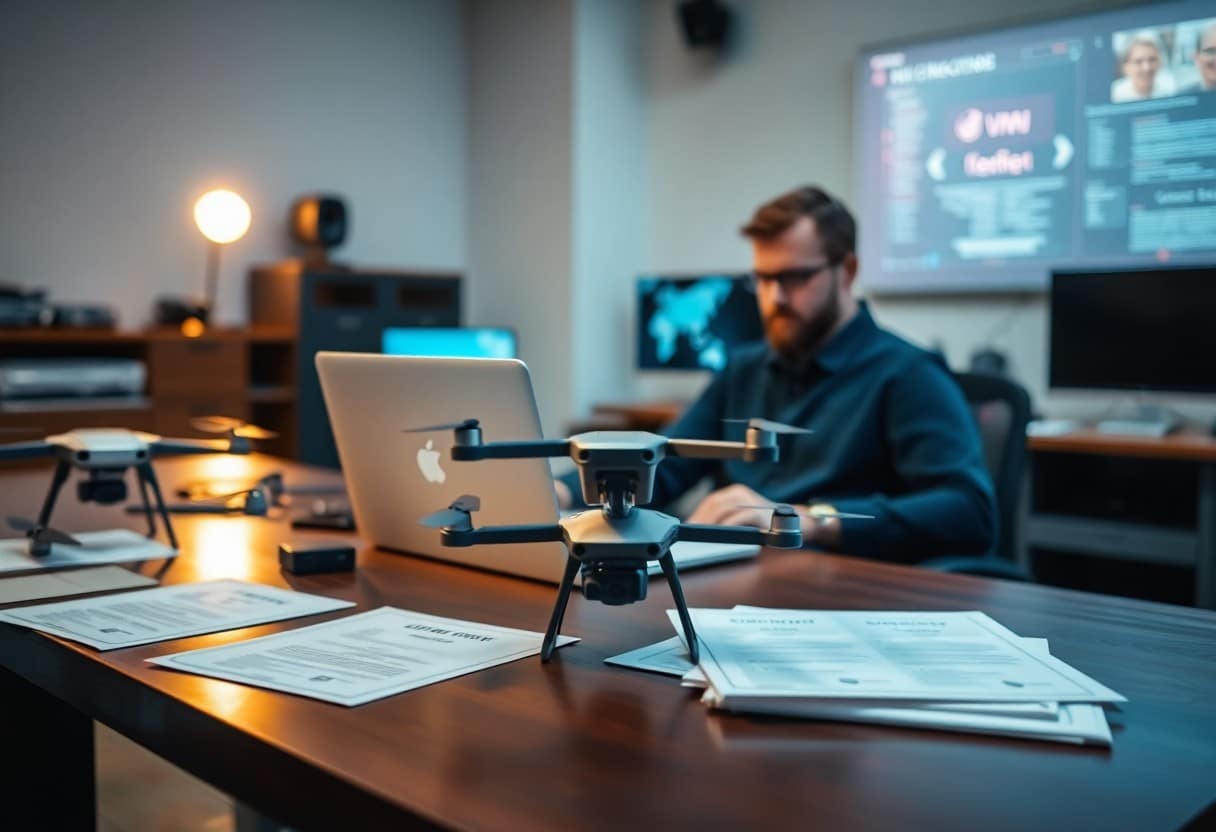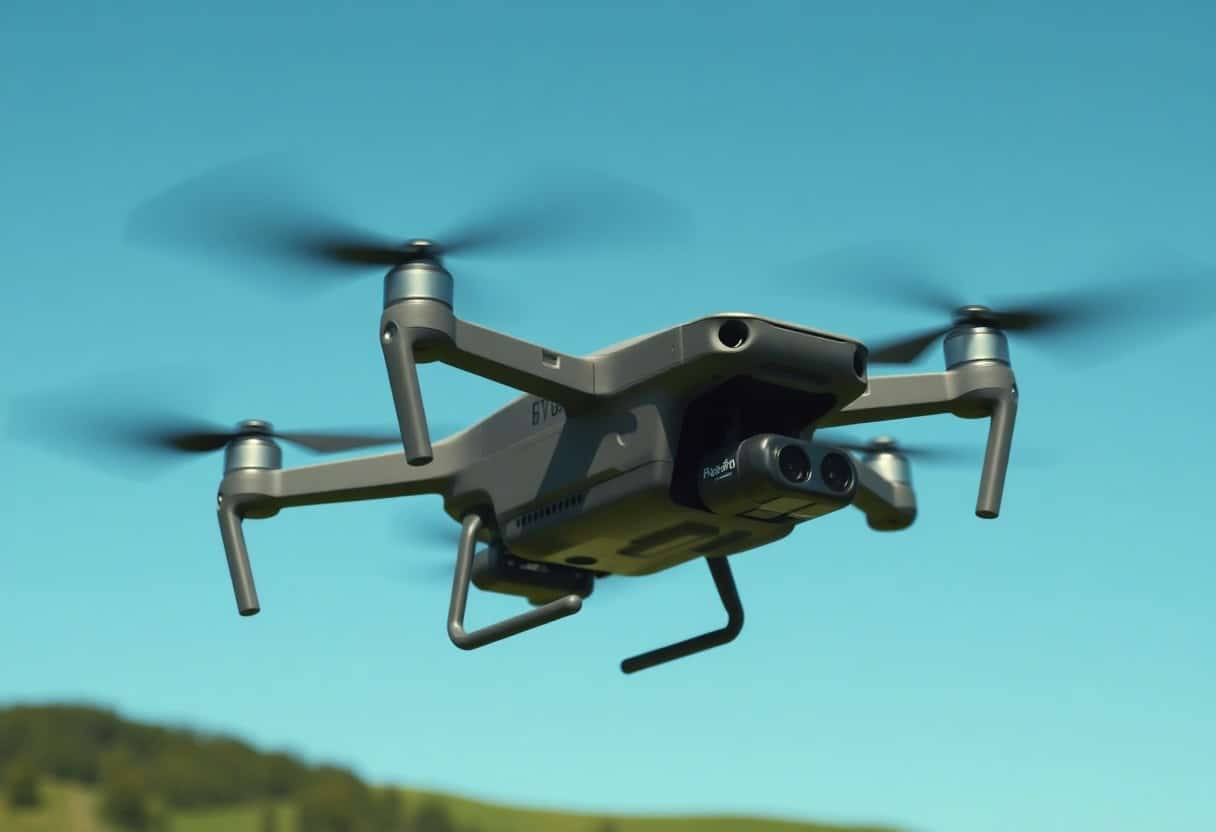Change Your Lens - 8 Steps to Cinema Drone Photography
In today's digital age, drone photography has become an essential tool for creating compelling images. If you're looking to improve your photography skills and give your work a more cinematic feel, then this article provides theEight Stepswill be your best reference. With these steps, you can learn how to capture moreDrama effectscreen and utilizes theThe Potential of DronesCreate stunning visual stories. Ready to transform your photos and take your photography to the next level?
Summary of key points:
- Programs - Plan your scenes and compositions well in advance of the shoot to ensure that each shot has a clear purpose.
- Equipment - Choose the right drone and camera equipment to ensure the best results.
- perspectives - Try different shooting angles and heights to find the most visually impactful image.
- light - Try to shoot during the golden hour and use natural light to enhance the quality of your images.
- Post-processing - Make post-production adjustments with editing software to enhance color and contrast and improve the picture.
- Sports - Allow the drone to perform smooth movements, avoiding sudden turns and stutters, and enhancing the smoothness of the screen.
- Creativity - Be creative and find unique themes and scenes to photograph to make your work more appealing.
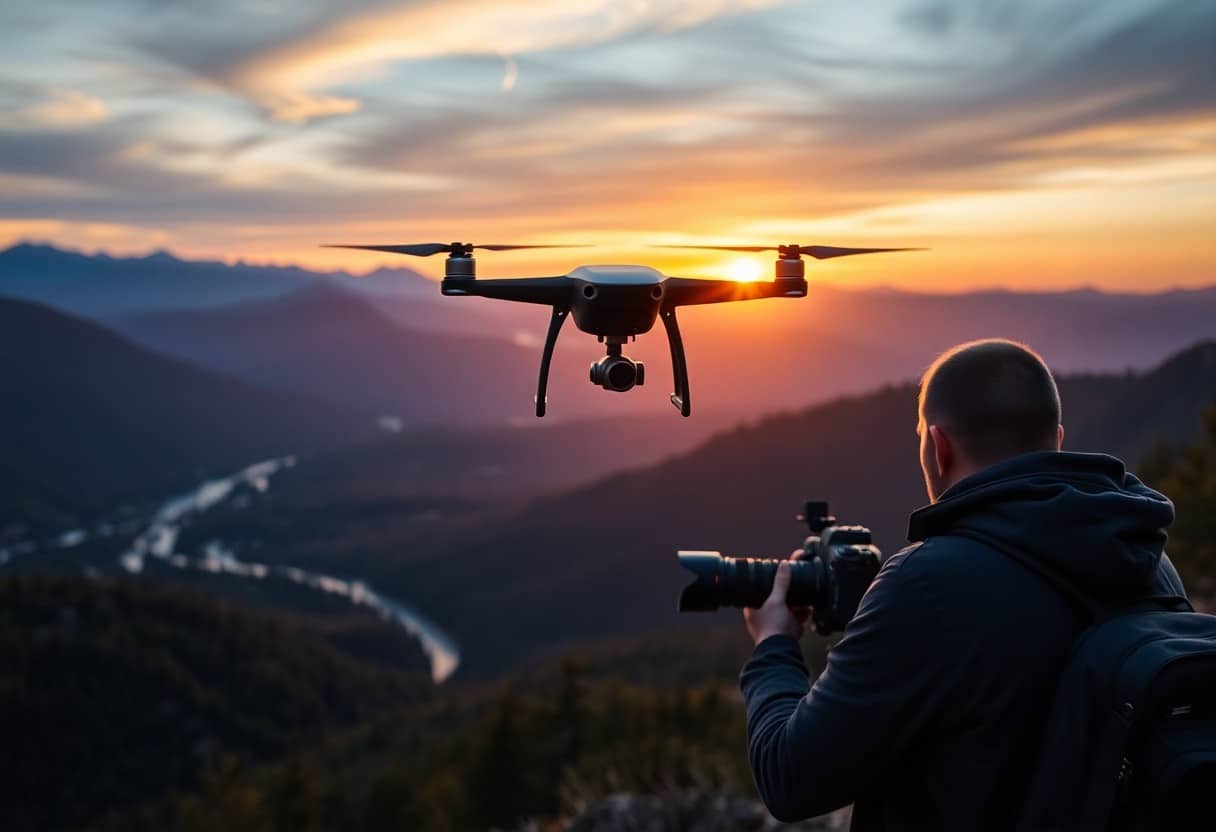
Understanding Movie Composition
In cinematography, understanding composition is crucial. It not only enhances the appeal of the image, but also conveys emotion and narrative. Learning how to use different compositional principles, such as the rule of thirds and guide lines, will make your aerial shots more aesthetically pleasing and allow the viewer to become more immersed in the image.
the rule of thirds
The rule of thirds is a basic compositional technique that helps you create a sense of balance in a photograph by dividing the surface into nine equal parts. When you place key elements at these intersections, your work becomes more attractive and dynamic.
Guide Lines
Leading lines are a powerful compositional tool that naturally lead the viewer's eye to the focal point of a photograph. By utilizing natural or man-made lines, such as roads, rivers, or walls, you can create an engaging visual journey that allows the viewer to explore the entire image.
Use theGuide LinesIt can be an effective way to enhance the layering and depth of an image. These lines can not only be obvious, such as a winding road, but can also be more subtle elements, such as the arrangement of shadows or the shape of a tree. Make sure that these lines actually lead the viewer's eye to your subject matter, which can make the image more emotionally impactful and convey the unfolding storyline. When using guide lines, you can experiment with different viewing angles and focal lengths to discover the best compositional effects.
Choosing the right drone
When shooting movie-quality drone photography, choosing the right drone is crucial. You need to consider a number of factors such as the features of the drone, the quality of the camera, the ease of operation and your budget. If you want to get more in-depth knowledge, you can refer to this articleWhat basic drone controls should every new pilot be familiar with?The
Camera Specifications
The specification of your drone's camera directly affects the quality of your images. You should choose a camera with high resolution, stability and low-light performance, which will make your shots more vivid and professional.
Flying ability
Flight capability is a key factor when choosing a drone, including its maximum altitude, range and maneuverability.Choose the one with long battery lifeThe drone will allow you to get more shots during the shooting process and avoid interruptions due to low battery.
When considering a drone's flight capabilities, you need to keep in mind thatsafetyrespond in singingstabilityA suitable drone should have A suitable drone should haveWind ResistanceThe drone's excellent maneuverability will help you fly steadily and capture clear images in a variety of environments. At the same time, understanding the drone'sMaximum Flight DistanceIt's also important to make sure you don't get lost and that the shoot goes smoothly.
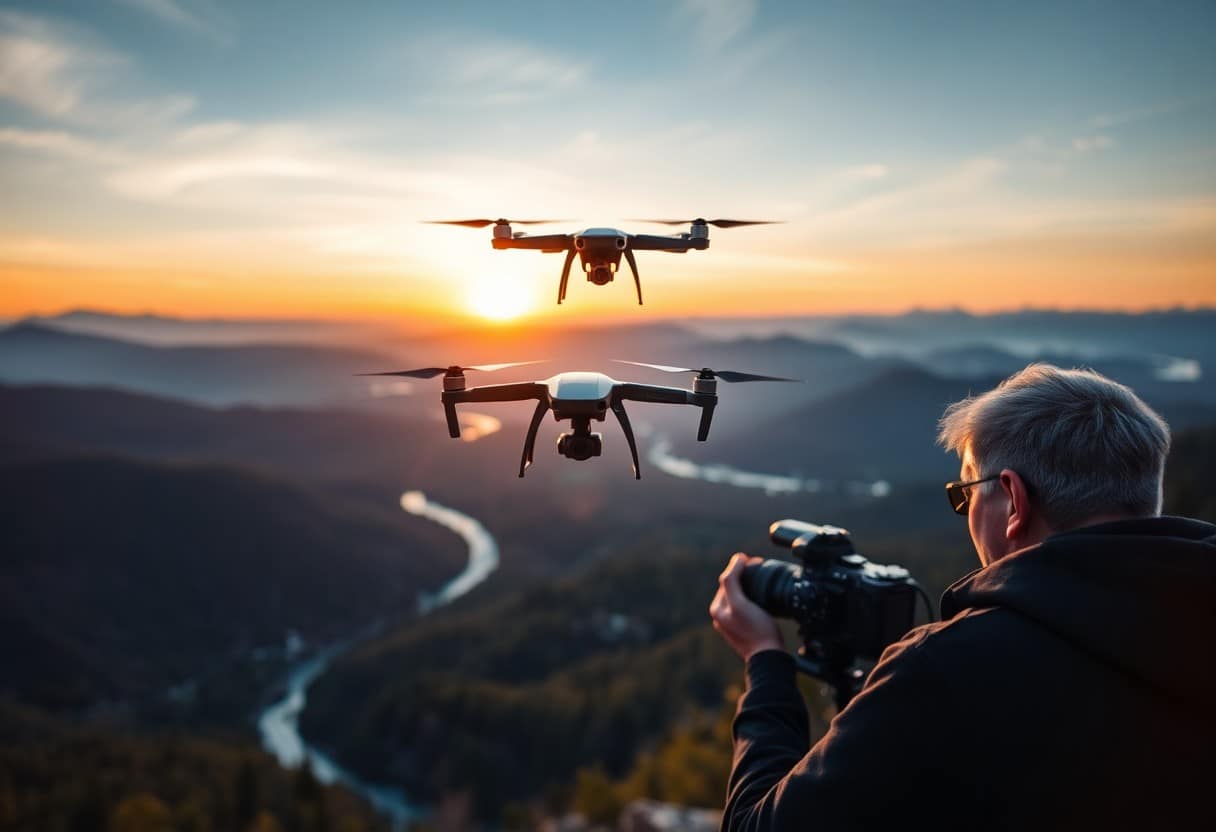
Mastering Camera Settings
To get high quality aerial photography, you need toFamiliarize yourself with the various settings of the cameraBy mastering different camera parameters, you can capture stunning images in a variety of environments. By mastering different camera parameters, you can capture stunning images in different environments, whether it's a low-light morning or a sunny afternoon. This will help enhance the visual effect of your work and make your photos more three-dimensional and attractive.
ISO, Shutter Speed and Aperture
During filming, you must adjust theISO, Shutter Speedrespond in singingapertureThe best exposure is achieved by using a higher ISO value for low-light situations, but it may also introduce noise. Higher ISO values are good for low-light situations but may introduce noise, while shutter speed affects the degree of motion blur and aperture size determines depth of field. Finding the optimal balance between the three is the key to capturing detailed images.
White balance and color profile
White balance and color profiles are also important factors in the ambience of your photos, and different settings will give your images a different color feel. You can choose different white balance options depending on the light source to produce more natural and realistic colors in your photos. Sometimes you can also use a custom white balance setting for more accurate color reproduction, enhancing the quality of your photos.
Correct setting of white balanceIt can significantly improve the color accuracy of your photos and avoid unnatural color deviations. By adjusting the White Balance, you can achieve more elegant tones in a variety of lighting conditions, while Color Profiles offer more creative possibilities. You can choose a profile that suits a theme or emotion, or even customize it to match a specific scene. Such settings can bring your images to life and create a strong visual impact.
Planning your shots
Prior to aerial photography, thePlanning your shotsIt's important. Not only will this help you get a clear picture of what you want to capture, but it will also improve your efficiency. Consider using some techniques, such as by referring to theHow to prepare for the drone authorization process?resources to learn how to be prepared.
Search Location
After you've determined what you want to photograph, the next step is toSearch LocationThe best way to do this is to scout the area ahead of time to understand the landscape and features. Scouting the area ahead of time to get a feel for the landscape and features will allow you to find the best locations for your shots, and thus achieve the desired results. Especially for nature or urban landscapes, you may need to take time to find unique perspectives.
Timing and Natural Light
timingrespond in singingnatural lightThis has a huge impact on the quality of your aerial photography. The ideal time to shoot is early in the morning or late in the evening, when the sunlight is soft and the direction of light is moderate, your work will be more attractive. In addition, pay attention to weather changes, avoid flying in strong winds or rainy days, so as to protect your own safety and equipment integrity.
utilizationnatural lightShooting is key because the quality and color of the light changes at different times of day. The golden hour in the early morning and dusk, when the light is soft and warm, can add depth and emotion to your work. Avoid shooting in the middle of the day, as strong direct light creates strong shadows, which can affect the details and colors in your image. Therefore, for your shooting plan.Choose the best time and lightThis will directly enhance the quality of your aerial artwork.
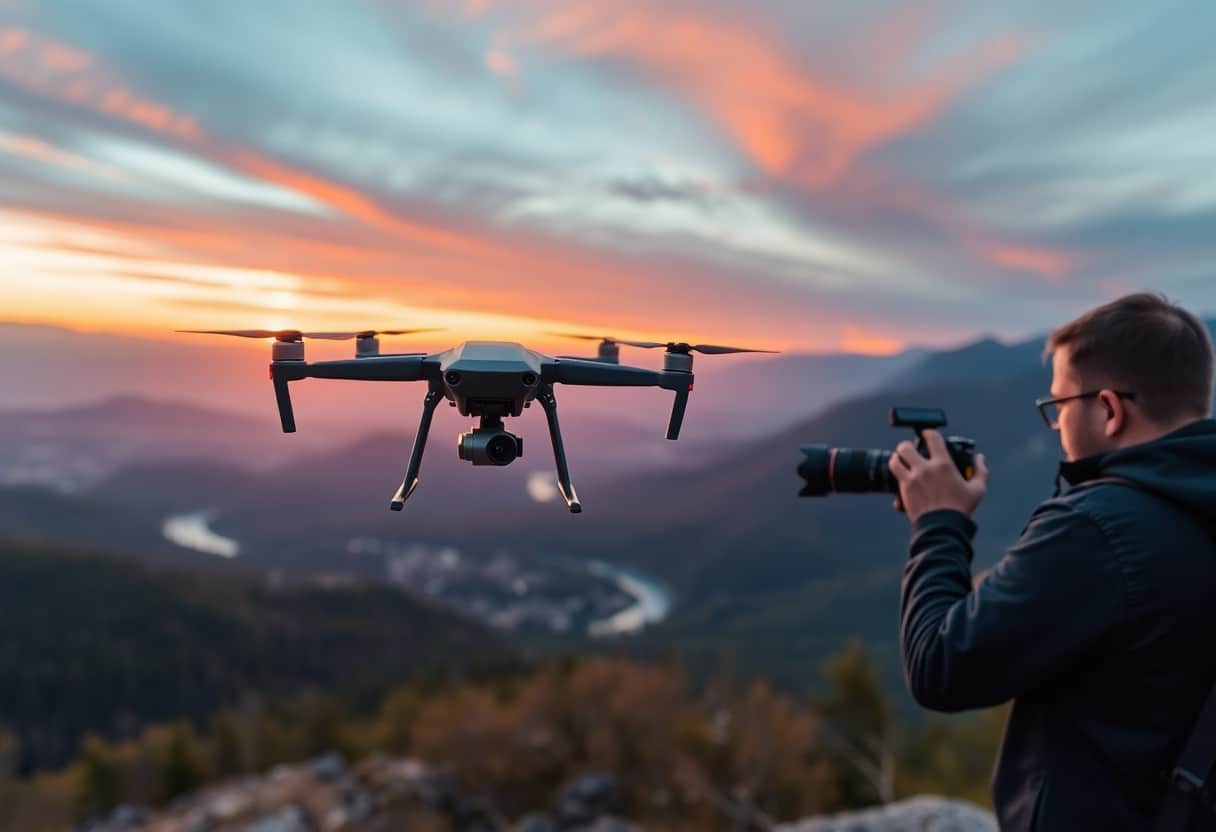
Utilizing Motion in Drone Footage
In drone photography, the use ofSportsYou can dramatically increase the power and professionalism of your images. By mastering different shooting techniques, you can not only capture still images, but also bring your work into the world of motion. To learn how to make your drone footage more cinematic, you can refer to theHow Pre-Flight Inspections Improve Compliance with Drone RegulationsThe
Smooth transitions and rocking mirrors
In Drone Photography.Smooth transitions and rocking mirrorsSeamlessly connects images to create a smooth visual effect. The use of slow and steady movements avoids unwanted tremors, making it easier for viewers to immerse themselves in your movie.
Dynamic Composition Skills
UtilizationDynamic Composition SkillsYou can create more layers in your images to emphasize the subject and make the scene more appealing. Try changing the height and angle of the lens to get different perspectives and make your shots more storytelling.
Motion composition techniques not only enhance the visual appeal of a movie, but also effectively guide the viewer's eye. By moving the drone, you can focus on a specific theme or scene and create a compelling image through different modes of movement, such as pushing, pulling and looking down. This assigns a direction to the interpretation of the image, reinforces your narrative intent, and ensures that the viewer follows your camera closely. Dynamic compositions make your film less bland and give it more energy and emotion.
Post-Processing Tips
Post-processing is the key step to enhance the quality and beauty of your drone photography. With proper editing and adjustments, you can make your images more engaging and cinematic. Mastering these techniques will help you stand out in the photo contest and move the audience's mind.
Editing Movie Effects
When editing, using editing software to add movie effects can give your work more dramatic tension. You can try using slow motion, fast forwarding, or even fade-in/fade-out effects. These techniques can enhance the emotional expression of your images and make your work memorable for your audience.
Color Toning and Enhancement
Color grading is an important part of enhancing the atmosphere of your images. With proper tonal adjustments and contrast enhancement, you can bring out the fullness of the colors and immerse the viewer in your photographs. Be sure to balance the colors properly to create a harmonious visual effect.
color mixingIt's not just about making an image look good, it's also about creating an emotional atmosphere. Depending on your theme and the emotion you want to convey, choose the right color scheme. For example, warm tones can make an image feel rich and full of life, while cooler tones may bring a sense of mystery or isolation. When adjusting brightness, contrast, and saturation, remember to maintain the naturalness of the colors and avoid the pitfalls of over-processing to bring your work to a higher artistic level in terms of color usage. In this way, your drone photography will visually appeal to a wider audience.
Transform Your Photography - 8 Steps to Cinematic Drone Photography
With these eight steps, you can effectively improve the quality of your drone photography and give your work a more cinematic feel. Mastering your shooting techniques, using the right equipment, and post-production are all keys to success. Remember, practicing and exploring new ideas will help you improve and ultimately make your photos not just images, but works of art with a story. Now, start using these tips to take your photography to the next level!
Frequently Asked Questions
Q: What is "Transform Your Lens - 8 Steps to Cinematic Drone Photography"?
A: This is a guide that provides eight steps to help photography enthusiasts enhance their photographic skills and creative vision by capturing cinematic images with their drone.
Q: What kind of photographers is this guide for?
A: This guide is suitable for all levels of photographers, whether they are beginners or experienced professionals, to get inspiration and practical tips.
Q: Do I need a specific drone to perform these steps?
A: While some drones have higher technical performance, such as better stability and higher picture quality, the tips in this guide can be applied to many different drone models.
Q: Where can I get this guide?
A: This guide can be purchased through a number of online platforms, so you may want to check out eBook stores or professional photography websites, which usually offer instant downloads.
Q: Are there any video demonstrations in this guide?
A: Yes, this guide includes video demonstrations to help readers understand each step more intuitively and to provide more reference value during the actual process.
Q: How can I improve my drone photography skills?
A: You can improve your skills by practicing, taking photography classes, and watching instructional videos from professional photographers. In addition, following the steps in this guide will also help you.
Q: How important is visual storytelling in drone photography?
A: Visual storytelling is crucial in drone photography because it's not just about capturing beautiful images, it's about allowing the audience to visually experience the emotion and setting of the story. This guide will help you better organize your shots and enhance the narrative of your film.
